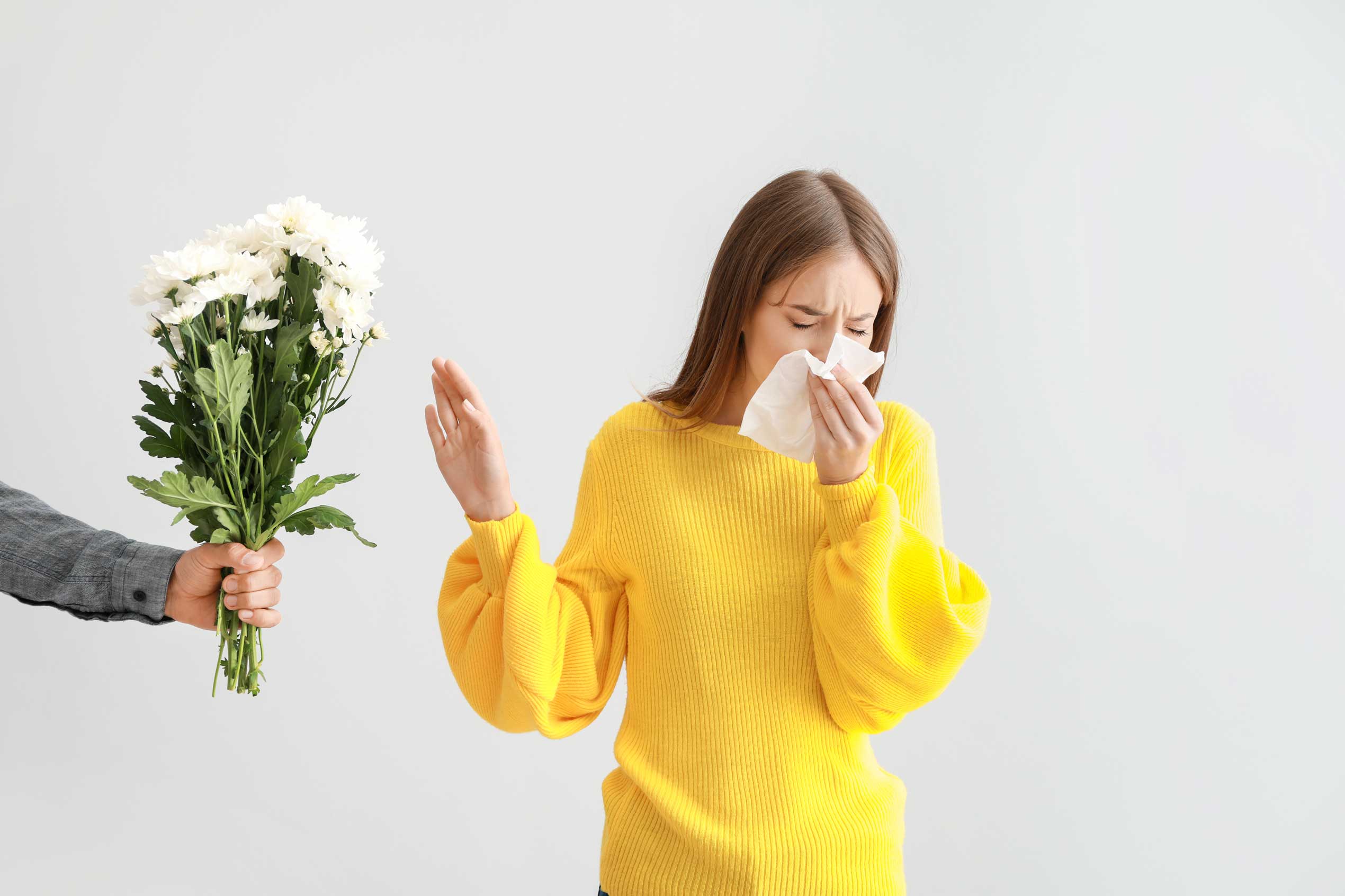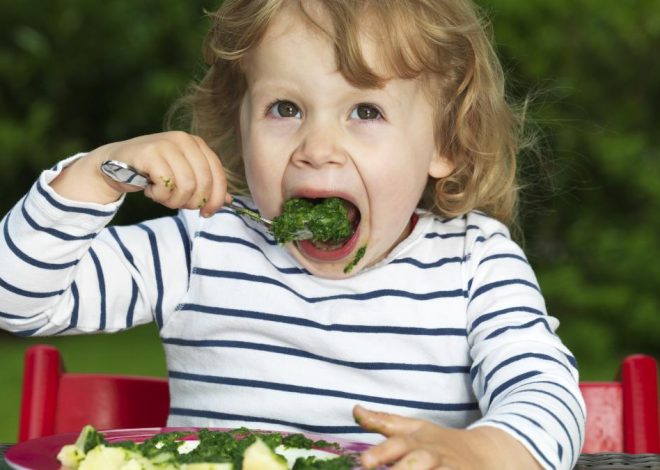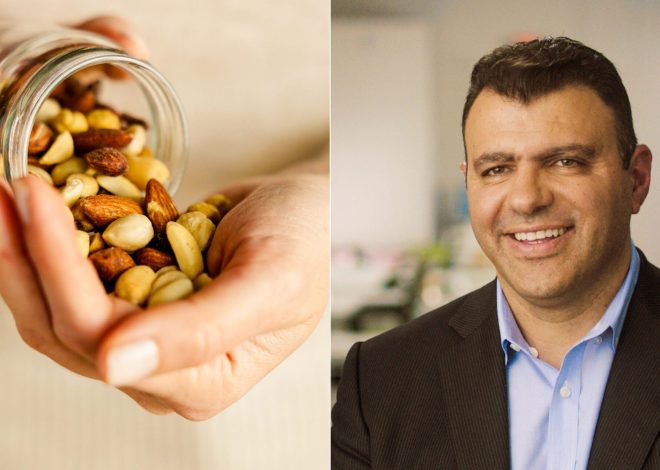
Diet for hay fever: How to relieve the symptoms
Table of contents
I was actually looking forward to the summer temperatures and the blooming flowers in the parks. But then the hay fever returns and ruins my plans.
While others enjoy the beautiful weather without a care in the world, I try to keep the balcony door closed as much as possible so that the pollen doesn’t stand a chance.
More and more people are experiencing the same thing as me, as the number of people who are allergic to pollen has been increasing since the 1970s. Climate change is also contributing to these high numbers.
But what really helps against annoying pollen when tablets, eye drops, etc. are not enough? As is often the case, one key lies in diet. We will show you how you can alleviate your allergy symptoms so that you too can soon enjoy the sun in the park.
How does hay fever develop?
Sneezing, a scratchy throat and itchy eyes – these are all symptoms that pollen allergy sufferers usually have to contend with in spring.
The reason: In the case of hay fever, the immune system reacts oversensitively to pollen that is actually harmless. The body perceives the fine grains as harmful pathogens that it then tries to fight.
The causes can be varied. For example, children whose parents both suffer from allergies may have a 50 to 80 percent higher risk of also suffering from allergies than children without allergic parents.
But air pollution, cigarette smoke and the duration of breastfeeding can also influence the development of allergies. This also includes diet, which also plays an essential role in hay fever.
More on the topic: Pollen allergy – These tips make everyday life with hay fever easier
Cross allergies: What role do they play?
A cross-allergy can also play a role in pollen allergy and becomes particularly important when it comes to nutrition.
A cross-allergy occurs when someone who is already allergic to a certain substance also reacts to a similarly structured substance, even though no allergic reaction was known before.
An example: Someone who is allergic to birch pollen may also be allergic to apples or nuts because they contain the same proteins.
The following cross-reactions are possible (among others):
- birch: Apple, pear, peach, raw carrots and potatoes, orange, celery, soy, tomato, nuts and chamomile
- hazel: Apple, pear, peach, apricot, walnut, hazelnut, almond
- Grasses & cereals: Apple, pear, peach, cherry, kiwi, melon, celery, tomato, peanut, rice and various types of flour
- mugwort: Apple, pear, peach, cherry, mango, pea, celery, tomato and peanut
- Plantain: Melon
- Olive family: Banana, raw potatoes and tomatoes
- ambrosia: Melon and celery
Low histamine diet
The tissue hormone histamine plays an important role. It is responsible for the allergic reaction taking its course. Therefore, allergy sufferers should take care to keep the histamine level as low as possible.
How does this work? By avoiding foods that contain a lot of histamine in everyday life. Here is a list of low-histamine and high-histamine foods:
These foods are low in histamine
- Bread & Grains: Spelt, rye, cereal flakes, millet, buckwheat, semolina, starch,
- Fruit: Sour cherries, peaches, blackberries, blueberries, cranberries, mango, coconut
- Vegetables: Fennel, carrot, celeriac, parsnip, radish, beetroot, salsify, sweet potato, onion, cucumber, pumpkin, zucchini, broccoli, kale, red cabbage, cauliflower
- Fish & Seafood: Plaice, cod, haddock, pollock, hake, trout
- Nuts & Seeds: Chestnuts, pistachios, macadamia nuts
- Sausage & Meat: Meatballs, cooked and boiled sausage, fresh and frozen meat
- Milk & dairy products: Cream cheese, mascarpone, cottage cheese, skimmed milk, long-life milk, quark, pasteurised whole milk, buttermilk, butter cheese, Gouda
- Eggs: boiled or fried
- Side dishes: Rice, wheat-free pasta, potatoes
By the way: Apples are actually one of the low-histamine fruits, but are not suitable for some people due to cross-allergies. You should pay close attention to how your body reacts. The best way to do this is to keep a food diary (e.g. this one*).
These foods are rich in histamine
- Bread & Grains: Bread or rolls with additives, grains, pumpkin seeds, ready-made muesli with dried fruit, nuts
- Fruit: Strawberries, guava, raspberries, kiwi, pineapple, pears, bananas, papaya, grapes, plums, grapefruit, limes, tangerines
- Vegetables: Kohlrabi, soy, spinach, tomatoes, eggplant, avocado, beans, mushrooms (especially champignon, porcini), sprouts, algae
- Fish & Seafood: Tuna, canned fish (especially sprats, sardines, anchovies, herring), smoked fish, shellfish and crustaceans, mussels
- Nuts & Seeds: walnuts, peanuts, pecans, hazelnuts, cashews, sunflower seeds
- Sausage & Meat: Offal, salami, mettwurst, smoked pork, bacon, grilled meat, kebab, gyros, sausages with additives, meat marinated for a longer period (e.g. sauerbraten)
- Milk & dairy products: long-matured cheese (e.g. Parmesan, Gorgonzola, blue cheese, Roquefort), hard cheese (e.g. Emmental, Gruyère & Cheddar), semi-hard cheese (e.g. medium-aged Gouda, Tilsiter & Edam), soft cheese (e.g. Camembert & Brie), sour milk cheese (e.g. Harzer cheese & Handkäse)
- Eggs: Sol eggs
- Side dishes: Ready-made products with pasta or potatoes (additives)
Reading tip: Food intolerance: When milk & co. become a problem
General tips for hay fever
In general, people with hay fever should eat an anti-inflammatory diet. If you pay attention to this, you have a good chance of surviving the spring without any problems.
There are also a few other things you can do against pollen & co. Here you can find more home remedies for hay fever.
Tip: A tea with mint and ginger can also help to relieve the symptoms. You will certainly find it in the drugstore, alternatively you can also order this tea from Pukka on Amazon*.
If all of this has little effect, you can also resort to medication, nasal spray or eye drops. You should definitely consult a doctor here, as there are various active ingredients that can help against the allergy.
You can find out more information about hay fever symptoms and treatment options at Onmeda.de
Important NOTE: This article is for information purposes only and is not a substitute for a medical diagnosis. If you have any uncertainties, urgent questions or acute complaints, you should contact your doctor or ask for advice at the pharmacy. The medical emergency service can be reached on the nationwide number 116117.
*Affiliate links

Ethel Purdy – Medical Blogger & Pharmacist
Bridging the world of wellness and science, Ethel Purdy is a professional voice in healthcare with a passion for sharing knowledge. At 36, she stands at the confluence of medical expertise and the written word, holding a pharmacy degree acquired under the rigorous education systems of Germany and Estonia.
Her pursuit of medicine was fueled by a desire to understand the intricacies of human health and to contribute to the community’s understanding of it. Transitioning seamlessly into the realm of blogging, Ethel has found a platform to demystify complex medical concepts for the everyday reader.
Ethel’s commitment to the world of medicine extends beyond her professional life into a personal commitment to health and wellness. Her hobbies reflect this dedication, often involving research on the latest medical advances, participating in wellness communities, and exploring the vast and varied dimensions of health.
Join Ethel as she distills her pharmaceutical knowledge into accessible wisdom, fostering an environment where science meets lifestyle and everyone is invited to learn. Whether you’re looking for insights into the latest health trends or trustworthy medical advice, Ethel’s blog is your gateway to the nexus of healthcare and daily living.



